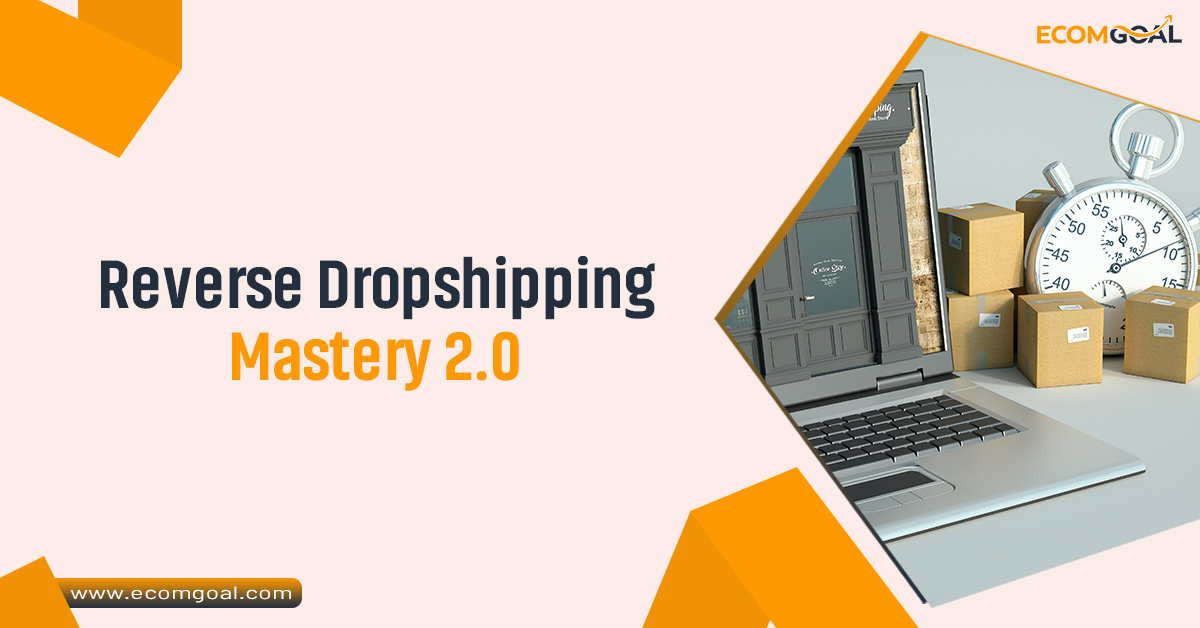
E-commerce has evolved, and so have the strategies to maximize its potential. Reverse dropshipping mastery 2.0, an innovative twist on traditional dropshipping, is quickly gaining traction among savvy entrepreneurs. If you’re familiar with traditional dropshipping, where lower-cost products are shipped directly from manufacturers to customers, reverse dropshipping flips the model. This approach focuses on selling high-quality or premium products from well-developed markets to regions where such products are in high demand. In this guide, we’ll explore how Reverse Dropshipping Mastery 2.0 is redefining e-commerce, its benefits, challenges, and key strategies to build a thriving business.
Understanding Reverse Dropshipping
In conventional dropshipping, products are typically sourced from countries with low production costs (like China or India) and sold in developed markets like the U.S. or Europe. In contrast, reverse dropshipping targets emerging markets that have a growing middle class and an appetite for high-quality, premium goods. Here’s how it works: you source luxury items or well-known branded goods from markets like the U.S., Europe, or Japan, and sell them to affluent consumers in regions with limited access to such products, such as Southeast Asia, Africa, or Latin America.
The rise of e-commerce platforms and the expanding global logistics network make it easier to bridge this gap, offering a lucrative opportunity for entrepreneurs willing to master reverse. Reverse Dropshipping Mastery 2.0 is the next level, refining techniques to identify and capitalize on niche markets in emerging economies that are eager for premium goods.
Why Choose Reverse Dropshipping?
Reverse dropshipping holds unique advantages for entrepreneurs willing to target underserved markets with high-quality products. Let’s explore the benefits that make this model an attractive option for today’s e-commerce business owners.
1. Untapped Market Potential
Emerging markets are experiencing a boom in disposable income, with millions of consumers keen to purchase high-quality products that are otherwise unavailable locally. This growing demand allows you to target a largely untapped customer base, driving high profitability through less competition than saturated, traditional dropshipping markets.
2. Higher Profit Margins
Unlike traditional dropshipping, where price competition is intense, reverse dropshipping enables you to offer premium products with significant markup. Premium goods from developed countries command higher prices in regions where they’re harder to obtain, allowing for greater profit margins per sale.
3. Building a Premium Brand
By focusing on high-quality products, reverse dropshipping allows you to create a brand image of exclusivity and quality. Positioning your business as a provider of sought-after, premium products enhances your brand perception and can lead to repeat customers and a loyal customer base.
4. Reduced Return Rates
Since customers are paying a premium for well-regarded products, they are typically more satisfied with their purchases, leading to fewer returns. High-quality products tend to meet or exceed customer expectations, reducing return rates compared to lower-cost, generic items.
Challenges in Reverse Dropshipping and How to Overcome Them
While reverse dropshipping has notable benefits, it also presents unique challenges. Knowing these and how to navigate them is key to mastering Reverse Dropshipping Mastery 2.0.
1. Complex Logistics and Shipping Costs
Shipping products from developed markets to emerging ones can be costly, and delays can occur due to distance and regulatory issues. To tackle this, work with reliable logistics partners who have experience in international shipping to emerging markets. Also, consider shipping options that offer tracking and insurance to ensure safe delivery.
2. Cultural and Language Barriers
Selling to markets with different languages and cultures requires localization and research. Utilize local translators and adapt your website and customer service to reflect local language and customs. Partnering with local influencers can also be a powerful strategy to build trust and connect with your audience authentically.
3. Currency and Payment Gateways
Currency exchange rates and payment processing options can complicate the purchasing experience for international customers. Use e-commerce platforms that support multiple currencies and integrate popular payment gateways in your target region to provide a smooth transaction experience.
4. Import and Export Regulations
Import restrictions on specific items or high taxes can impact the feasibility of reverse dropshipping to certain countries. Research customs requirements for each country you want to target, and choose products that align with local import policies. Some successful reverse dropshippers also use third-party logistics providers to manage customs and taxes, making the process smoother.
Steps to Build a Successful Reverse Dropshipping Mastery 2.0 Business
With the right strategy, reverse dropshipping can become a profitable business model. Here are some steps to help you master Reverse Dropshipping Mastery 2.0 and build a successful e-commerce business.
1. Identify a High-Demand, Low-Availability Product Niche
Research emerging markets to identify product niches that are in high demand but not easily available locally. Luxury cosmetics, premium gadgets, health supplements, and organic foods are popular options. Google Trends, keyword research tools, and e-commerce data platforms can provide valuable insights into what’s popular in your target market.
2. Partner with Reliable Suppliers
The quality and reliability of your suppliers can make or break your business. Choose suppliers with a track record of providing high-quality products. For branded products, consider working directly with manufacturers or certified distributors to ensure authenticity and prevent issues with counterfeit goods.
3. Optimize Your Online Store for SEO
An optimized online store is essential for attracting organic traffic. Use SEO techniques to target long-tail keywords relevant to reverse dropshipping and your niche. For instance, if you’re selling premium skincare products in Brazil, keywords like “luxury skincare Brazil” or “imported cosmetics Latin America” will attract interested buyers. Include these keywords in titles, meta descriptions, and content on your site.
4. Create a Smooth Customer Experience
High-quality customer service is essential for selling premium goods. Offer multiple contact options (chat, email, phone) and provide support in the local language if possible. Clearly communicate product descriptions, shipping times, and return policies on your website to manage customer expectations.
5. Market with Localized Content and Influencers
Craft marketing campaigns that resonate with your target audience’s culture and values. Content marketing, blog posts, and localized social media campaigns can boost your brand’s presence. Collaborating with local influencers can enhance brand trust and increase visibility in your target market, as they often have a loyal following who trust their recommendations.
Essential SEO Tips for Reverse Dropshipping Success
Implementing effective SEO strategies can set your reverse dropshipping business up for success by improving visibility and driving organic traffic. Here’s how to make your website SEO-optimized:
- Keyword Research: Identify keywords popular in your target region and incorporate them naturally in product descriptions, meta titles, and blog content.
- Optimize for Mobile: Mobile optimization is crucial, especially in emerging markets where users are more likely to shop on smartphones.
- Use Structured Data: Schema markup can help search engines better understand your product listings, which may increase your chances of showing up in rich results.
- Create Quality Content: Regularly publish blog posts, product reviews, and guides relevant to your niche. Valuable content not only engages visitors but also boosts your website’s search engine ranking.
- Localized Link Building: Collaborate with regional websites, forums, and blogs for backlinks. Localized link building can help boost your credibility and visibility within your target market.
Conclusion: The Future of Reverse Dropshipping
Reverse dropshipping is a promising opportunity for entrepreneurs ready to serve global markets in new ways. With Reverse Dropshipping Mastery 2.0, you can leverage this emerging model by focusing on premium products and offering high-value items to eager customers in underserved markets. By mastering logistics, localizing your brand, and implementing SEO strategies, you can build a profitable reverse dropshipping business that stands out in today’s competitive e-commerce landscape.
As consumer demand for premium products continues to grow in emerging markets, the future of reverse dropshipping looks bright for those ready to adapt, strategize, and seize the opportunity.

Hello, I am an E-commerce Expert with extensive experience providing services to numerous e-commerce brands and individuals since 2017. My primary areas of expertise include the Amazon, Walmart, and Shopify marketplaces. Linkedin
